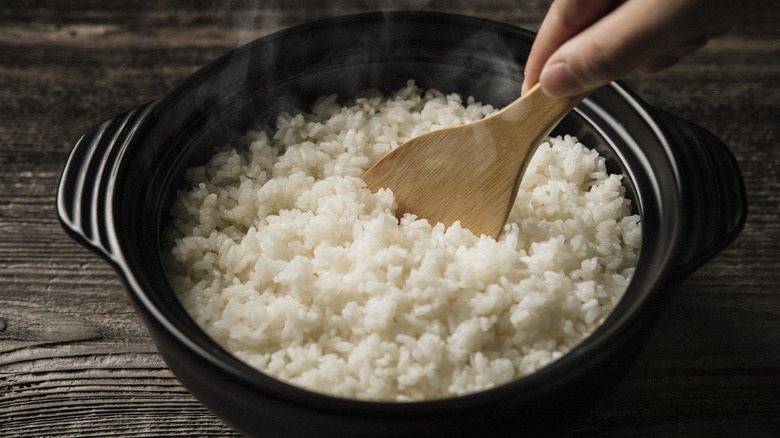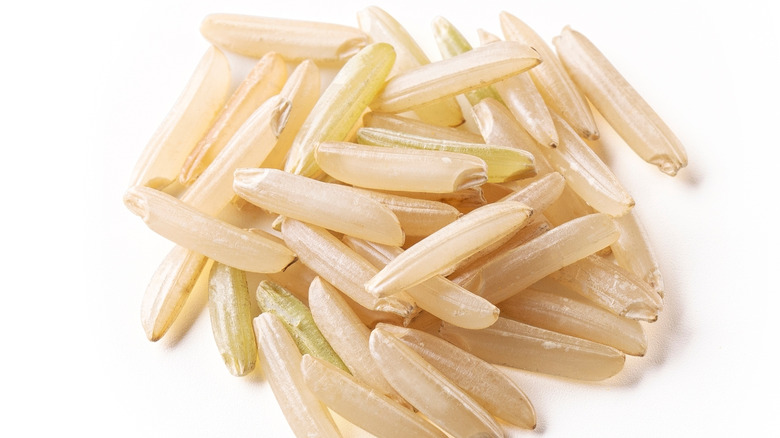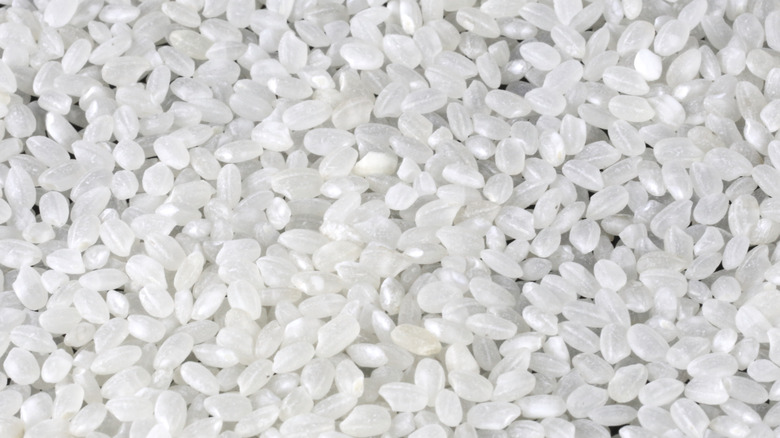What's The Difference Between Long Or Short Grain Rice?
Rice is among the most common food items you can expect to find in a kitchen pantry, seeing how it's one of the most versatile essentials any home cook (or any kind of cook, for that matter) could have in their kitchen arsenal. As someone who grew up in an Asian household, this couldn't be more true. Every single day and dish, there would be a rice component to it. I pride myself in learning from a young age all the great things about rice: how to cook perfect steamed rice, the best method to reheat it, and of course, the kinds of rice out there.
After all, not all rice is made equal — there's long grain and short grain. Long grain rice and short grain rice each have distinct characteristics and uses. The main differences are texture, cooking methods, and culinary applications. Understanding these crucial differences will help any cook of any level make the best rice dish they can.
What is long grain rice?
Long grain rice is widely known for its fluffy and light texture. Its distinct characteristic is its elongated and slender grain that is about four or five times longer than short grain rice. Another stand-out feature of long grain rice is that it separates when cooked. That's because its starch content is significantly lower than its counterpart, preventing long grain rice from clumping up and becoming dense.
When cooked, long grain rice absorbs enough water to cook and maintain its structural integrity. Remember that when cooking this type of rice, you want to make sure you rinse it prior to cooking and measure the water accurately. When cooked perfectly, the result is an airy, fluffy rice that remains intact and not mushy. This type of rice is perfect for fried rice, stir-fries, pilafs and biryanis, where separation contributes to the recipe's success. Long grain rice is also the perfect canvas for absorbing spices and seasonings, which allows it to pair seamlessly with a wide range of cooking styles and different ingredients.
What is short grain rice?
Short grain rice, on the other hand, has a much higher starch content. This results in a creamy, sticky texture once cooked. The grains are also significantly shorter and plumper, giving it a mushier texture overall. This distinct characteristic makes it perfect for recipes and dishes requiring the rice's texture to be dense — recipes like sushi, sweet rice puddings, or risotto.
I grew up eating congees, and this rice is terrific for this purpose. If you find a recipe that calls for this, cook it with more water. Some might even call for more than the average, and that's okay. It really boils down to how you will use the rice and what consistency is needed. Make sure to stir this rice frequently so it properly releases its starch. All in all, if your dish calls for a more cohesive nature, opt for short grain rice.


